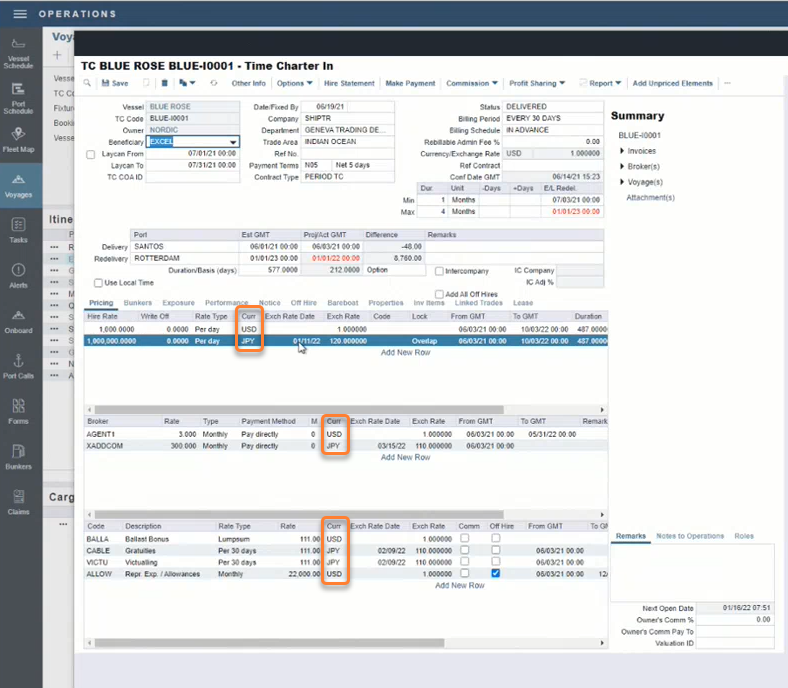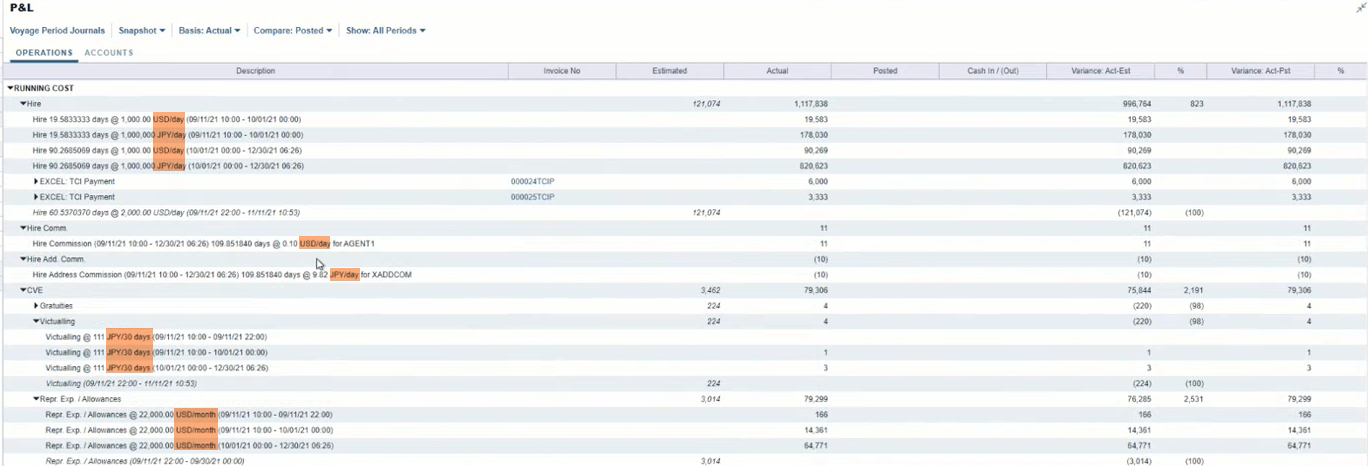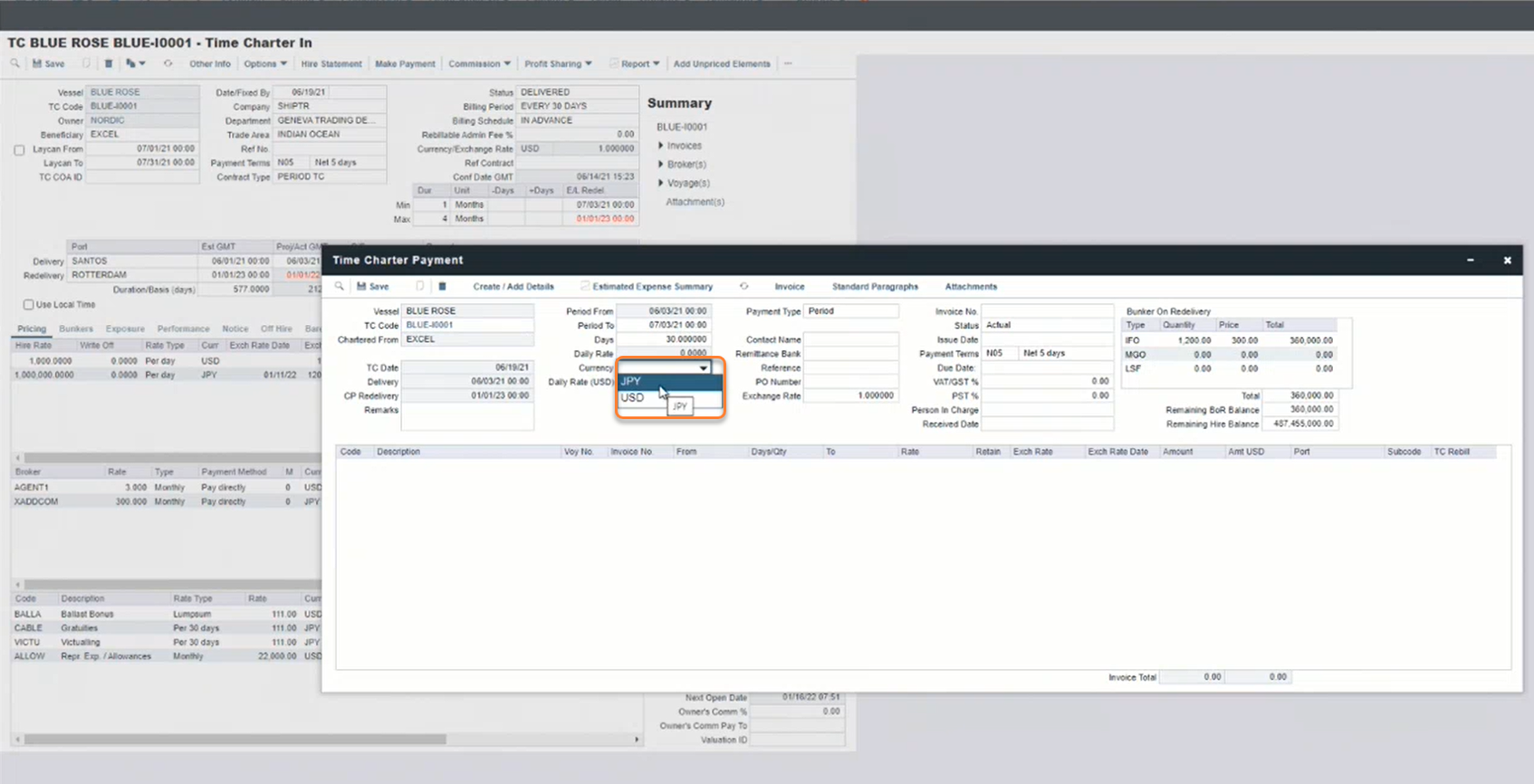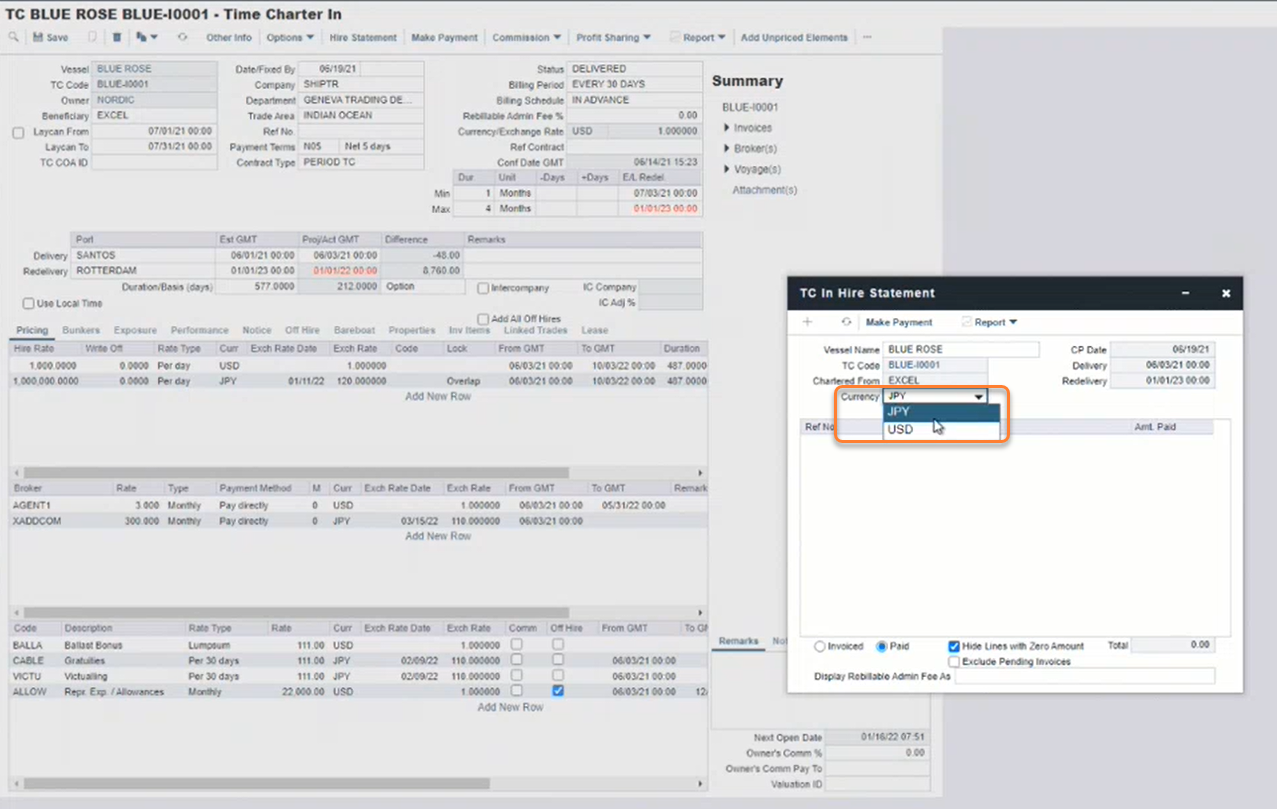IMOS - Multicurrency Time Charter contracts
Overview
The Multicurrency Time Charter (TC) feature allows you to record, manage, and invoice Time Charter contracts in several distinct currencies.
You may want to use this feature when you have the following contract types
A contract under which hire will be paid in two different currencies
A contract under which hire will be paid in one currency, and CVEs will be paid in another
A contract under which hire and CVEs are paid in one currency while bunkers will be paid in another
We recommend using this feature and the line-item exchange rates feature together.
Usage
To set up Multicurrency Time Charter contracts, do the following:
Enable configuration flag CFGEnableMultiCurrencyTCContracts.
This feature requires schema version 365 or higher. If, when enabling CFGEnableMultiCurrencyTCContracts, the system populates "This Feature requires a schema upgrade" at the top of the screen, reach out to Veson Support to request a schema upgrade to allow the new feature. The Schema may also be upgraded in a later maintenance window as well.
After enabling the configuration flag, you will see the changes in the following areas of the Veson IMOS Platform.
TCI or TCO
You can associate several currencies with the contract in a Time Charter In (TCI) or Time Charter Out (TCO).
A “contract-level” currency and exchange rate carries over from the default single-currency configuration. Rebillables and bunkers will be invoiced in your default currency and exchange rate.
You can assign currencies and exchange rates to hire rate periods.
You can define the hire rate currency and the invoice period in a hire rate period.
All currency periods invoiced over the lifetime of a TC must have a hire rate defined in the contract, even if the rate is zero. If you have a contract with hire rates in multiple currencies, you must have the “Overlap” selected in the Lock column specified for each rate period.
You can assign currencies and exchange rates for CVE rate periods and lumpsum amounts.
Daily and monthly commission rates can be assigned currencies and exchange rates.

Voyage Estimate
When you pull a TC into a Voyage Estimate, the currencies and exchange rates you set are converted to the estimate’s base currency.
Voyage P&L
When you pull a TC into Voyage P&L calculations, the set currencies are respected and maintained. The line items from the P&L calculation record base and currency amounts. The line items indicate the currency in which they’re expected to be paid in their descriptions.

TC Invoices
When you create TC Invoices, we recommend maintaining concurrent billing schedules for each currency you set. When the TC Invoice form is opened to create an invoice, do the following:
Select a currency from the contract. If there are periods remaining to invoice, the invoice type will default to Period; if there are no remaining periods, the invoice type will be set to Special.
You can add additional line items to the invoice using the Create/Add Details form. Line items that can be invoiced in any currency, like rebillable voyage expenses or off-hire bunker deductions, can be included regardless of the currency but only once across all invoices.
If you need to record incremental invoices, you can select the Incremental invoice type after specifying a currency. Only components that make sense to invoice in the selected currency – reversals for previous invoices in the same currency, rates defined in the same currency, and adjustments previously invoiced in that currency – can be included in the incremental invoice.
The billing schedules should line up for each currency. If one currency’s invoices are issued on the 15th of each month, then the other currencies' invoices should also be issued on the same date.

Hire Statement
The Hire Statement reports work similarly to invoicing. When you open the Hire Statement form, you should select a currency; if no currency is selected, the default currency is selected by default. After selecting a currency, you can view any of the Hire Statements reports. The reports are filtered to only include line items whose financial impact is or is expected to be, recorded in the selected currency.
Rebillables and bunker costs are included in the Hire Statement reports in a TC's contract currency until they’ve been invoiced; after they are invoiced, they’re included in the Hire Statement reports in the currency that they were invoiced in.

